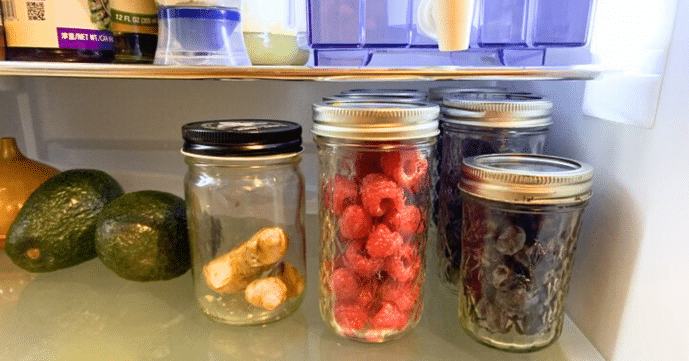Breaking Up is Hard to do, but We’re Better for It
In a world drowning in plastic, my daughter and I decided to take on a challenge to be plastic-free for three months. The motivation? The haunting images of the Great Pacific trash heap, the distressing impact on wildlife, and the alarming realization of microplastics infiltrating our bodies. Here’s what we learned during our brief experiment with eliminating plastic waste from our home. Spoiler alert: we didn’t last three months. Not sure we lasted one month, but here is what we learned as well as some of the plastic-free hacks we picked up along the way.
Why We Tried Living Plastic-Free
The decision to embark on this plastic-free experiment stemmed from frightening evidence of environmental devastation. Images of the vast expanse of the Great Pacific trash heap and the heartbreaking scenes of turtles, birds, and other wildlife harmed by plastic left an indelible mark on us. The realization that microplastics could embed themselves in our internal systems, leading to health issues, fueled our determination. The urgency to contribute to a sustainable future and curb the ever-growing landfills also played a significant role.
Why We Failed
Our optimism clashed with the harsh reality that even organic vegetables come shrouded in plastic. The paradox emerged when our attempts to buy non-plastic encased vegetables resulted in rapid wilting and spoilage. The dilemma between spoiled food waste and plastic waste became a tough call, leaving us questioning which was more harmful to the environment.
Oh, and I should also mention that my husband and son were not “all-in” on our plastic-free living experiment. This left my daughter and I up to the task of digging their plastic waste out of the garbage can to wash and recycle it. In the end, we agreed it was taking things a bit too far for us.
6 of Our Hacks for Cutting Down on Plastic Waste
Minimizing Plastic Use:
Amidst our failure, we discovered some relatively simple plastic-free hacks to reduce our plastic usage and mitigate its impact on the environment. These go beyond the refillable beverage containers we now carry everywhere. Here are five of my favorites that, after more than three years, have become habits.

Berries in Glass Jars
- Mason jars became our allies in the war against plastic. We found that placing berries in these jars extended their shelf life significantly.
- No need to wash the berries beforehand; just pop them into serving-sized ball jars and screw on the lids. They stay fresh for two weeks, without the mold that would form after less than a week in the plastic packaging from the store.
- Tip: fill the jar with water and give it a shake to rinse the berries just before using.
- The bonus? An organized and tidy refrigerator, making breakfast berry routines a delight.
Berries in Glass Jars![]()
- Mason jars became our allies in the war against plastic. We found that placing berries in these jars extended their shelf life significantly.
- No need to wash the berries beforehand; just pop them into serving-sized ball jars and screw on the lids. They stay fresh for two weeks, without the mold that would form after less than a week in the plastic packaging from the store.
- Tip: fill the jar with water and give it a shake to rinse the berries just before using.
- The bonus? An organized and tidy refrigerator, making breakfast berry routines a delight.

Toothpaste Revolution with Toothpaste Bits
- Toothpaste tubes are unrecyclable plastic. So I tried Bite Toothpaste Bits, which are stored in small travels-sized glass jars, and I have bid farewell to traditional toothpaste tubes.
- Conveniently scheduled shipments arrive in sealed plastic-free brown bags, which we repurpose to refill the jars.
- With flavors like charcoal-infused, Bites offers a different brushing experience, but it still foams up and cleans well. (Note for dog owners: that they are extremely toxic to dogs.)
![]() Toothpaste Revolution with Toothpaste Bits
Toothpaste Revolution with Toothpaste Bits
- Toothpaste tubes are unrecyclable plastic. So I tried Bite Toothpaste Bits, which are stored in small travels-sized glass jars, and I have bid farewell to traditional toothpaste tubes.
- Conveniently scheduled shipments arrive in sealed brown bags, which we repurpose to refill the jars.
- With flavors like charcoal-infused, Bites offers a different brushing experience, but it still foams up and cleans well. (Note for dog owners: that they are toxic to dogs.)

Ridwell – Recycling Beyond Boundaries
- Enter Ridwell, a subscription service that fills the gaps left by conventional recycling methods.
- For less than $20 per month, Ridwell picks up, from my front door, hard-to-recycle items like plastic bags, shells, styrofoam, prescription bottles, lightbulbs, batteries, and even clothing.
- Cleanliness is key; rinsing out plastic bags and shells ensures recyclability. Contaminated items find their way to the trash, a crucial lesson learned.
![]() Ridwell – Recycling Beyond Boundaries
Ridwell – Recycling Beyond Boundaries
- Enter Ridwell, a subscription service that fills the gaps left by conventional recycling methods.
- For less than $20 per month, Ridwell picks up, from my front door, hard-to-recycle items like plastic bags, shells, styrofoam, prescription bottles, and even clothing.
- Cleanliness is key; rinsing out plastic bags and shells ensures recyclability. Contaminated items find their way to the trash, a crucial lesson learned.

Refillable Deodorants (which are also chemical-free)
- Another high volume land-fill item is used deodorant containers. So we tried some alternatives and the one we like best is BeautyCounter’s Clean Deo.
- We both work out and get sweaty, and the deodorant eliminates odors and sweat, leaving no marks on our clothes, we like the soft lavender, clean rose, and fresh coconut scents, and it’s toxic ingredient-free (EWG certified).
- Full disclosure: the packaging is not plastic-free, but it is both recyclable (the innermost container) and reusable (the lid and outermost part – which I have re-used for 5 years without needing to replace).
![]() Refillable Deodorants (which are also chemical-free)
Refillable Deodorants (which are also chemical-free)
- Another high volume land-fill item is used deodorant containers. So we tried some alternatives and the one we like best is BeautyCounter’s Clean Deo.
- We both work out and get sweaty, and the deodorant eliminates odors and sweat, leaving no marks on our clothes, we like the soft lavender, clean rose, and fresh coconut scents, and it’s toxic ingredient-free (EWG certified).
- Full disclosure: the packaging does contain plastic, but it is both recyclable (the innermost container) and reusable (the lid and outermost part – which I have re-used for 5 years without needing to replace).

Using Self-Foaming Liquid Soaps and Refilling Them
- It has become so easy and convenient now that we have started to just buy large liquid soap bottles and refill all of the dispensers in all of our bathrooms instead of throwing them away just to replace them again. Hand soaps, bath soaps, and even facial soaps.
- Foaming dispensers use less soap and are better on our septic system, which is better for the environment.
- Regular liquid hand soap can be diluted as much as 1:5 with tap water to fill any foaming dispenser. Facial soaps and shower soaps take a bit of trial and error to get the dilution right for the right amount of foam, but it’s worth it.

Switching to Laundry Sheets – no more liquid detergents or Pods
- After trying a few, I landed on one (Soulink: fresh linen) that cleans as well as our prior liquids. It smells great too. Not too strong, not too floral, just a subtle cleanness.
- One sheet works for a normal load, or I use 2 for a big heavy load of post-game smelly socks. For whites, I sometimes add 1/2 c vinegar to the rinse cycle (but that’s just me).
- I order online a couple of times a year (much less frequently than the prior liquids) and it arrives in a small cardboard box – no more huge plastic bottles in the trash or recycling. No more gooey detergent spills either!
![]() Using Self-Foaming Liquid Soaps and Refilling Them
Using Self-Foaming Liquid Soaps and Refilling Them
- It has become so easy and convenient now that we have started to just buy large liquid soap bottles and refill all of the dispensers in all of our bathrooms instead of throwing them away just to replace them again. Hand soaps, bath soaps, and even facial soaps.
- Foaming dispensers use less soap and are better on our septic system, which is better for the environment.
- Regular liquid hand soap can be diluted as much as 1:5 with tap water to fill any foaming dispenser. Facial soaps and shower soaps take a bit of trial and error to get the dilution right for the right amount of foam, but it’s worth it.
![]() Switching to Laundry Sheets – no more liquid detergents or Pods
Switching to Laundry Sheets – no more liquid detergents or Pods
- After trying a few, I landed on one (Soulink: fresh linen) that cleans as well as our prior liquids. It smells great too. Not too strong, not too floral, just a subtle cleanness.
- One sheet works for a normal load, or I use 2 for a big heavy load of post-game smelly socks. For whites, I sometimes add 1/2 c vinegar to the rinse cycle (but that’s just me).
- I order online a couple of times a year (much less frequently than the prior liquids) and it arrives in a small cardboard box – no more huge plastic bottles in the trash or recycling. No more gooey detergent spills either!
Our attempt at a plastic-free lifestyle was far from flawless, but it taught us resilience and creativity. Furthermore, we feel like we’re making a difference, and that matters to us.
Our site contains links to products and services, which may provide us with a commission. Prices provided are up-to-date when posted. As an Amazon Associates, we earn from qualifying purchases.
Share this post:
Author
-

Christy is a wife, mother of twin teenagers, a 3x CMO, an advisor and mentor who lives in the Seattle area. She finds joy in the everyday magic of nature and wildlife and loves to travel, cook, garden, and spend time with family and friends.
View all posts






I love reading tips like these. There are little things we can do that in total can make a difference. Thank you for sharing and would love to hear more tips.
Thank you for the feedback, Gwyn. I saw your comment as I was traveling through the airport today looking for a place to fill my reusable water bottle. I now carry one with me whenever I travel and fill it up once I clear security. Bottle fillers are typically located near the restrooms in most U.S. airports. I barely ever buy bottled water which is a win-win, cutting plastic and saving $$.
This information is incredibly helpful. As much as we try to eat and live thoughtfully, plastic is inevitable. However, every little bit helps. And we must try and keep trying to make better choices. I use and reuse glass jars, only use bar soap and have switched to laundry sheets (eliminating those heavy jugs of detergent).
Love this Nancy, I’m exploring laundry sheets as well. Definitely share your favorites with us. (my family isn’t loving the fragrance of the one I tried recently).